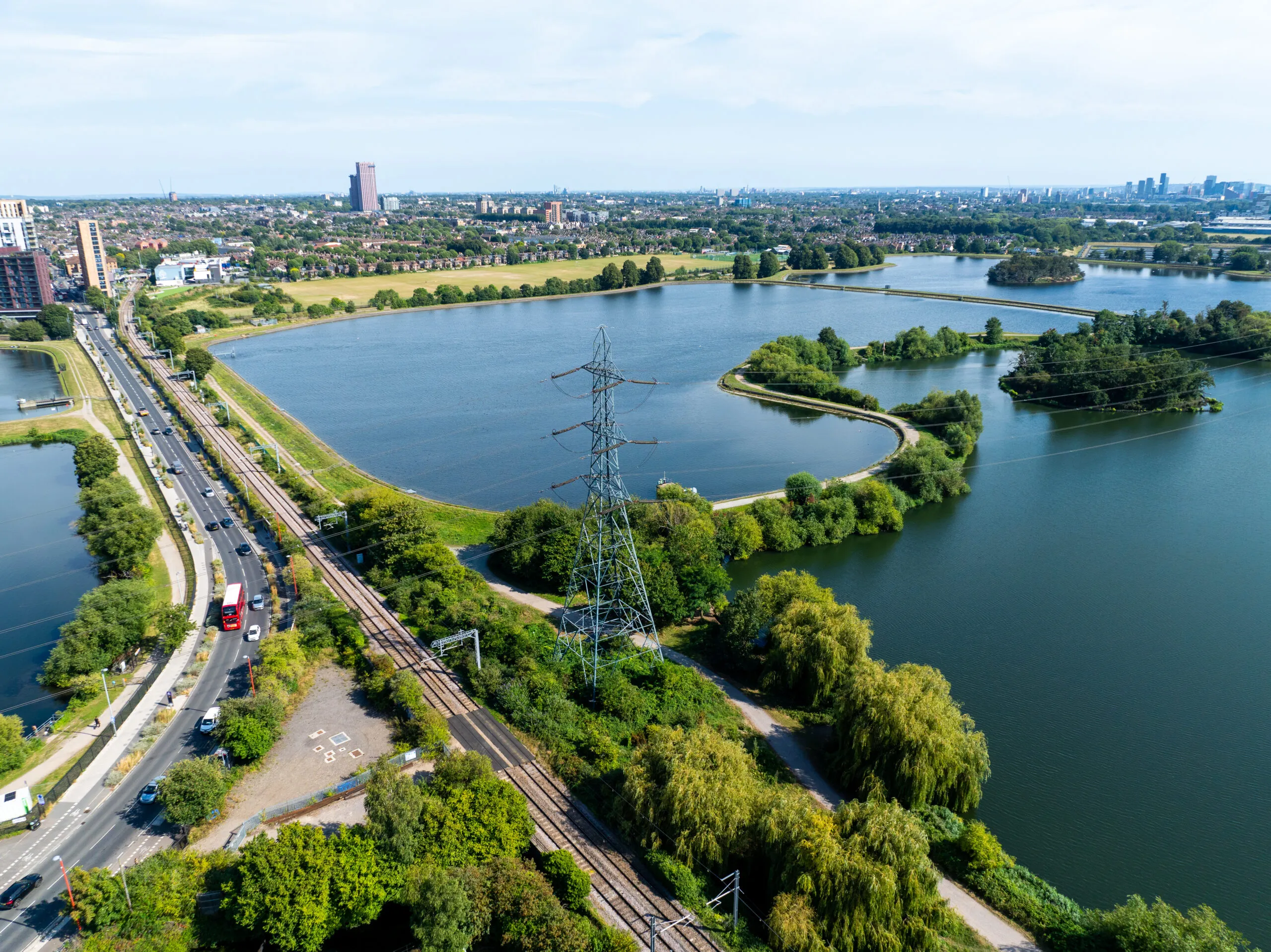In July, NCE joined National Grid president of strategic infrastructure Carl Trowell during his visit at Waltham Cross substation in North London, where overhead lines are being upgraded and the substation is being expanded as part of the North London Reinforcement (NLR) project.

Carl Trowell is president of strategic infrastructure for National Grid
The project involves the upgrading of existing overhead power lines – from 275kV to 400kV capacity – between Pelham Substation in Hertfordshire and Hackney Substation in London. To support the overhead line upgrades, there will also be associated works to the substations at Pelham, Rye House, Waltham Cross, Brimsdown, Tottenham and Hackney.
“I try to spend at least one day a week at one of the project sites. The best day on earth for me is with my boots and hi-vis on at a project site. I really like to see what’s happening on the ground,” says Trowell.
It is important for him to gain insights into individual projects’ challenges and progress for evaluating performance at a portfolio level, he says.
“Once a quarter, we do a full portfolio review looking at how each project is performing, how the interactions are happening, whether there are any portfolio effects, etcetera. I would find that impossible if I hadn’t been out to the projects, because otherwise they become esoteric descriptions of projects on a piece of paper.”
I try to spend at least one day a week at one of the project sites. The best day on earth for me is with my boots and hi vis on at a project site. I really like to see what’s happening on the ground
NLR is among the 17 Accelerated Strategic Transmission Investment (Asti) projects. These are part of the Great Grid Upgrade (GGU), which involves network upgrades to provide links to renewable energy sources and expand the grid’s capacity. As part of the delivery strategy, National Grid split the GGU works in two waves, with the Asti projects being part of ‘Wave 1’.
“The first wave includes projects that had already gone through phases of planning – and we needed to start those as quickly as possible,” says Trowell. These projects come under a different Ofgem framework to other projects in the country, with the aim of accelerating delivery by transmission owners. It streamlines the regulatory approval and funding process by reducing the number of regulatory assessment stages.
“One of the really big things around Asti was that it allowed us to spend money and make commitments to the supply chain ahead of time,” says Trowell. “There are two different parts of the supply chain that we need to focus on. One is the capacity of companies like M Group and Murphy for doing the works, and the other is the OEM equipment suppliers.”
“We went out and set up some really big long-term framework contracts with the critical OEMs. We started placing long lead time orders, including in some cases, just capacity reservations,” he says.
In terms of the engagement with the civil engineering companies, he says: “We picked the partners that we’ll be working with for almost a decade and brought them in early, in many cases years before construction began.”
“We wanted three things from that. [Firstly] we were afraid that if we did this in a traditional way, the supply chain would just not have the people and capacity, particularly in critical skills, when we needed them. So, by bringing them in early, we gave them the visibility and enabled that ability to plan. Part of the commitment was that they would start recruiting and training. I’m very pleased that several of our partners built new overhead line training centres.
“The second one was for them to be involved in the consulting process, the design and the ready-for-construction part. And the third was to get a portfolio effect, so if we innovated on a new bit of approach, which we are doing, then that would be rolled out across the whole portfolio.”

Overhead line are being upgraded at Waltham Cross substation, as part of the North London Reinforcement project. Works also include the extension of the substation
Recognising the benefits of early supply chain engagement, National Grid opted for this approach for GGU’s Wave 2 projects as well. Having the ability to work together for a considerable time before construction has allowed for a new approach to delivery – through the adoption of Project 13 principles, which National Grid trialled at the London Power Tunnels 2 project – construction methods and consenting.
“The Great Grid Partnership [which will deliver Wave 2 projects] looked at all the projects. They’ve mapped them down to individual work fronts. They mapped it down to what resources are needed at that work front, at what time, down to how many cranes will be required. And so our ability to now understand where we might have pinch points and where we can smooth things out is at a level we’ve never had before,” says Trowell.
“One of the really big advantages we’re already seeing is that even whilst we’re doing the application for planning consent, our delivery partners are actually influencing the design. For example, they are saying, ‘This is the access we’re going to need in that location to be able to do our work. So, let’s put this in the planning process’ or ‘If you engineer it that way, it’s more difficult for us to deliver’. Having them on board early in that development for design and delivery is really useful.”
In addition, early supply chain engagement is supporting innovation. “We have greenfield projects where we have hundreds of towers to put up, hundreds of kilometres of new line and many new substations. We are looking to innovate in that area. It’s not that we’re necessarily doing things that are groundbreaking compared to other infrastructure types, but they’re quite new for utilities. We’re currently engineering completely modularised substations that can be built offline and prefabricated in standardised units. We are also looking at two to three different foundation systems which we can then apply one in any case.”
National Grid is also working with Hyperion Robotics and the University of Sheffield on a UK-first trial to manufacture, install and test 3D-printed substation foundations.
“One of the other projects we’ve got ongoing now is taking a look at the tower design,” says Trowell. “We are confident that we have the ability to come up with a scheme that could reduce the steel required by 20-30%.
“We’ve got a big portfolio, so we actually have forward visibility. We can deploy new innovations hundreds or thousands of times and that’s allowing us to approach things in a different way. And there are multiple benefits from that: speed, cost and CO2 reduction.”
The sheer number of projects in the pipeline to be executed as part of the GGU led to some changes within the business as well. National Grid formed a dedicated infrastructure delivery business unit called Strategic Infrastructure, part of which is what Trowell calls the “world-class centre of excellence in consent”.
Most of the projects are nationally significant infrastructure projects, meaning they must be initiated under development consent orders (DCOs). “We have 13 consecutive ones. I’m not aware of any other organisation that’s running such numbers of consecutive DCOs.”
“We said that we have to be consistent. We can’t do our consenting processes one way in Suffolk and another in Lincolnshire.”
Trowell says National Grid has brought experts who have previously worked on some of the county’s biggest projects to join the team. “We are building our own systems and processes and also recruiting and training people from entry level to be part of that.”
Asked how he views the overall progress of GGU two years into the programme, he notes: “We’ve hit every milestone we set. We still need things to go our way; we need the government and partners to play their role.
“We’re continuing to build; my organisation at the moment has about 1,100 people on the client side. We’ve built that from three people, and we’re bringing in 350 people a year – people with tremendous skills right through to graduates and apprentices.”
Like what you’ve read? To receive New Civil Engineer’s daily and weekly newsletters click here.



